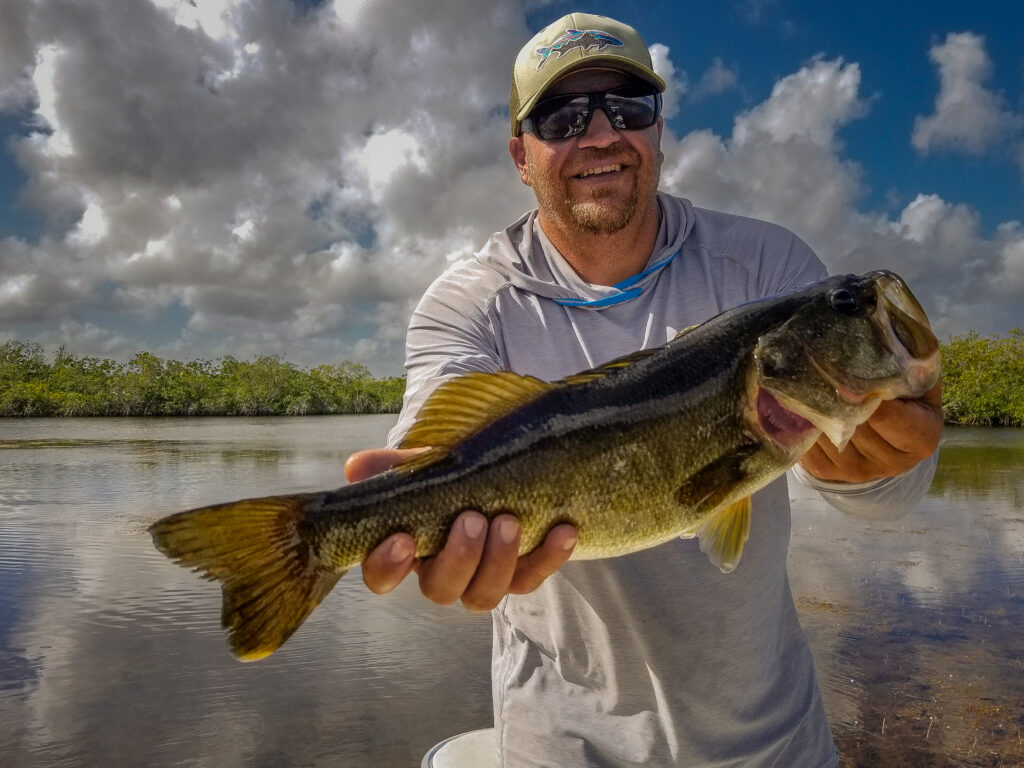Email Cell -305.393.1245
HOME » Bass

Largemouth and peacock bass are two of the most prized gamefish in South Florida, offering anglers an exciting challenge. What makes fishing for them in the Everglades special is these species share their habitat with some of our saltwater species. We might set out targeting snook and suddenly find ourselves casting to a redfish, tarpon, or bass, it’s this unpredictability that makes each trip unique. Adding to the excitement, juvenile bull sharks and Florida gar are frequent visitors to the freshwater Glades, hanging around in the same areas. It’s a reminder that every cast in the Glades holds the potential for something unexpected.
Largemouth bass, Florida’s state freshwater fish, is one of the most popular gamefish in the region. The Florida strain of largemouth bass is highly prized for its size and aggressive behavior, making it a favorite among anglers. The Everglades’ interconnected system of slow-moving water, sawgrass marshes, mangroves, and canals provide an ideal habitat for these fish. Bass favor areas with abundant vegetation, such as hydrilla and bladderwort, which offer both cover and feeding opportunities.
Bass in the Everglades are opportunistic predators, feeding on a variety of prey, including small fish, frogs, and insects. The region’s warm, nutrient-rich waters support rapid growth, and while individual bass may not reach the trophy sizes seen in other parts of Florida, the Everglades often offer high catch rates, making it a rewarding experience for anglers.
Peacock bass, in particular, are a standout species, known for their bright color and aggressive behavior. These fish don’t just bite, they attack with prejudice. Once hooked, peacock bass put on a show, jumping and fighting with a tenacity that keeps your adrenaline pumping.
Peacocks were introduced to South Florida in 1984 by the Florida Fish and Wildlife Conservation Commission (FWC) to control invasive fish species and enhance recreational fishing opportunities. Specifically, the butterfly peacock bass, native to the Amazon River Basin in South America, was chosen for introduction due to its adaptability and appeal as a sportfish. South Florida’s canal systems were already home to invasive species like tilapia and oscars, which disrupted the native fish populations.
The FWC released about 20,000 fingerlings into canals and lakes in Miami-Dade and Broward counties, where the warm waters mimicked their native habitat. Before the release, extensive studies were conducted to ensure the butterfly peacock bass would not pose a threat to native species, as they were less likely to tolerate cold temperatures, limiting their spread beyond South Florida.
Everglades National Park began collecting entrance fees for all park visitors on January 10, 2019 – including anglers with licensed fishing guides, Effective January 2025, 7-day passes will be $35 per person. You may also purchase an annual Everglades National Park pass for $70. Children aged 15 and under are always admitted free.